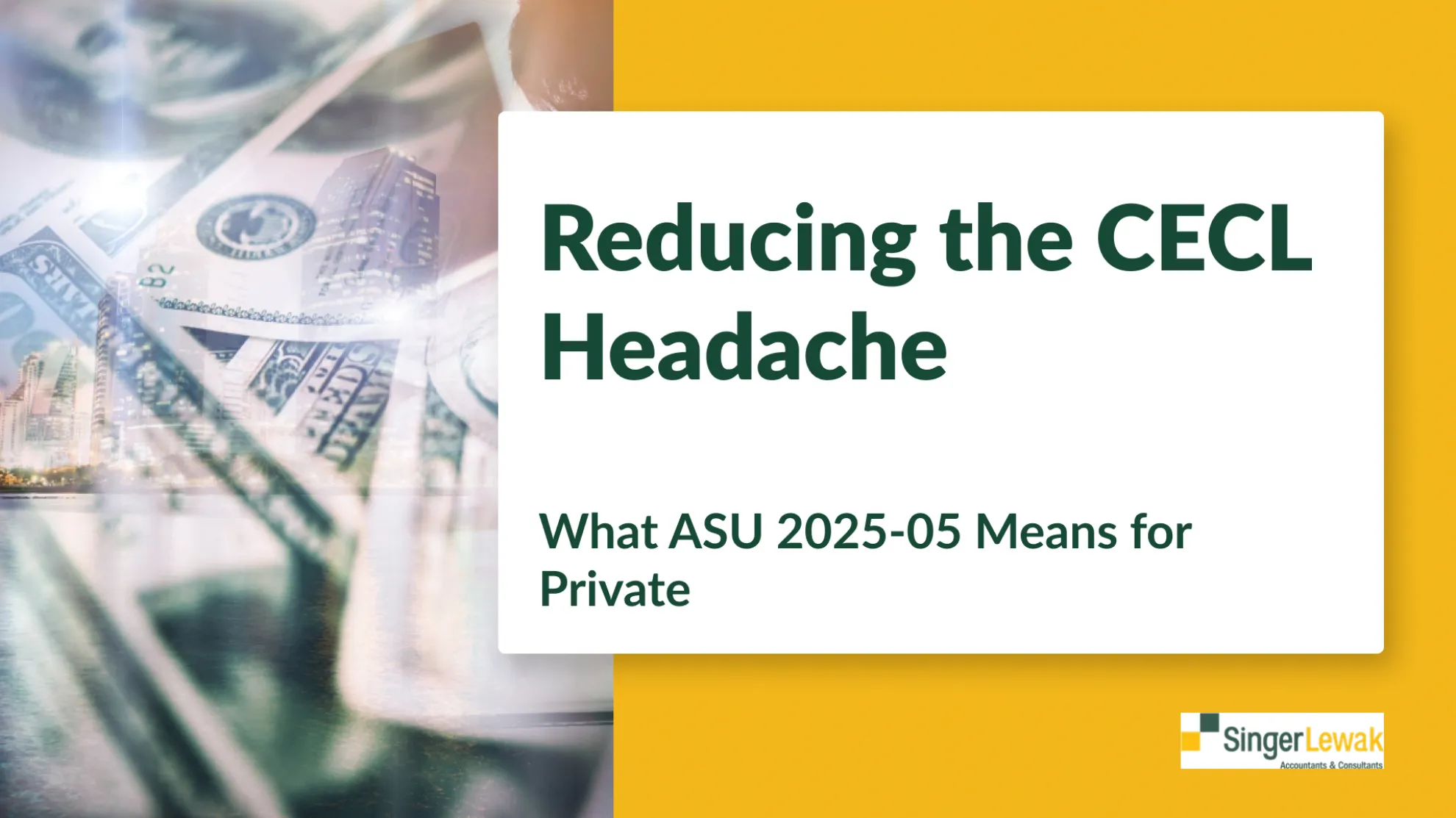On July 30, 2025, the Financial Accounting Standards Board (FASB) issued Accounting Standards Update (ASU) 2025-05, introducing a new practical expedient for private companies and not-for-profit organizations. The update simplifies how these entities estimate credit losses on short-term receivables and contract assets—providing meaningful relief from the complexities of the Current Expected Credit Loss (CECL) model.
Background: Why CECL Has Been a Challenge
CECL, under Topic 326, requires entities to project lifetime expected credit losses using forward-looking information, including macroeconomic data. While this approach enhances transparency for long-term financial assets, it has proven overly complex for short-term receivables. Many private companies and nonprofits—with predictable payment patterns and minimal loss exposure—have found the CECL process resource-intensive without adding significant value.
Key Changes in ASU 2025-05
The new standard allows eligible entities to use subsequent collection information—actual cash received after the reporting date—to estimate credit losses. This expedient applies to:
• Accounts receivable and contract assets from revenue transactions
• Entities reporting under Topic 606 (Revenue from Contracts with Customers)
• Private companies and not-for-profit organizations
This shift aligns accounting more closely with the way these organizations already monitor receivables and assess collectability.
Simplification Through Waived Preferability Assessment
Typically, a change in accounting method requires a preferability assessment, where an entity must prove the new method is superior. ASU 2025-05 waives this requirement, letting entities adopt the expedient without justifying the change. This removes a significant administrative hurdle and allows for quicker, smoother implementation.
A Practical Example
Consider a privately held manufacturing company that sells food packaging containers on net-30 terms. Nearly all receivables are collected within 45 days, and defaults are rare.
Under CECL, the company would need to develop a forecasting model using economic forecasts and credit profiles, despite low risk. With ASU 2025-05, the company can instead base its estimate on actual post-reporting collections. For instance, if 95% of invoices are collected within two weeks after the balance sheet date, minimal credit losses can be recorded without relying on complex projections.
This approach reflects real-world experience while reducing compliance costs and freeing resources for more strategic financial activities.
Implementation Tips
Organizations planning to adopt the expedient should:
• Review receivables aging and collection history
• Clearly document their policy election
• Coordinate early with auditors
• Ensure disclosures explain how subsequent collections inform estimates
This transition also presents an opportunity to simplify other aspects of financial reporting.
Effective Date and Early Adoption
- Effective Date: Annual periods beginning after December 15, 2025, including interim periods.
• Early Adoption: Permitted and may be advantageous, particularly if financial statements for the current period have not yet been issued.Early adoption can help avoid the need to build CECL models for short-term receivables, streamline audits, and align reporting with a more intuitive method.
Broader Implications
ASU 2025-05 highlights FASB’s responsiveness to stakeholder feedback and signals a shift toward practical, scalable solutions. By recognizing that one-size-fits-all models like CECL are not always suitable, FASB has provided a framework that is better tailored for smaller, less complex entities.
Conclusion
For organizations dealing primarily with short-term receivables and contract assets, ASU 2025-05 offers a welcome simplification. It reduces compliance burdens, lowers costs, and keeps the focus on clear, reliable financial reporting rather than unnecessary modeling complexity.



